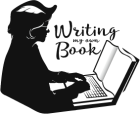Email management will become one of your greatest time wasters—if it isn’t already—as an author, especially as you gain recognition. There’s no doubt that an organized email system enhances productivity, so it’s always timely to learn better email management skills.
“Email workflow designed to optimize your time,” is an article I read back in May 2012 on CBS MoneyWatch [1] that I found helpful at the time. Based upon the opinions of strategy advisor Peter Bregman, Dave Johnson explores ways to streamline your email workflow. I still find many of the ideas shared in the article useful, yet there remain some recommendations they overlook. I’ve added some modifications that push through cleaning out your inbox rapidly.
Handle email like an appointment.
I agree with Johnson’s recommendation that email be handled like an appointment. Only deal with email at specific times and for a specific span of time. For me, that means opening my day with a 30 – 60 minute email review session. Occasionally, you’ll have to take longer if you are an author who is pursuing speaking engagements or provides coaching services.
The number of additional clock-in times you schedule for the day depends upon the nature of your business.
Use these strategies to speed up email management.
There are specific tasks you’ll want to work through during your opening email-handling session.
1. Complete responses to any deferred emails from the previous session.
You’ll learn more about deferred emails in Step #8.
2. Scan your messages from the bottom up.
During this step you’ll see emails that you need to respond to and emails that aren’t worth bothering with. You’ll also see if there are several messages from the same client. Your goal isn’t to read emails at this step. It’s to identify what you need to respond to and what you need to delete.
3. Delete emails you know you’ll never read.
Spam, offers that you aren’t interested in, etc. just clutter up your inbox. Click on the first message, then hold down the Shift key. Click your mouse on the last message in the block that’s chaff. Hit the delete key on your keyboard or click on the delete option in your email manager. This is the easiest way to quickly delete blocks of emails that aren’t important to you.
4. Flag and drag mail you want to read later.
5. Read and respond to important emails.
6. Delete or file anything you have read.
I used to do this far more faithfully before Outlook added the conversations feature. Now, I still create folders for each person I communicate with regularly and move correspondence into their folder when a conversation ends. Otherwise, I allow it to remain in the inbox.
7. Stop when time runs out and get back to earning income.
Unless you are paid for the time you respond to emails or will lose a valuable opportunity, stick to this guideline. More on this in Step #8. Keeping your email time within certain time parameters will prevent you dribbling your day away on efforts that don’t pay your bills.
8. Schedule appointments for mail you need to respond to in the next session.
Inevitably, there are times you run out of time to complete all responses within a session. Do you extend the session or save work-in-progress as a draft?
Even if responding to emails becomes a part of your monetization plans, you’ll find life far more rewarding if you reserve time for your creative work. Don’t let email become your business.
Successive Sessions
All of your following email sessions will open with completing any drafts you saved during the previous session. The steps after that remain the same. I like to leave my office at the end of the day with all emails responded to. If this just isn’t possible, I schedule the response for the next morning. This can be especially helpful if I need to calm down so my response is thoughtful and free of emotional charges.
It’s okay to send a brief neutral message to an angry email. Say something like, “I received your email. Give me some time to think about what you’ve said.” Even if you can’t ‘sleep on it,’ time may bring clarity.
[1] The original article, Email Workflow Designed to Optimize Your Time, was originally published on CBSNews.com.

